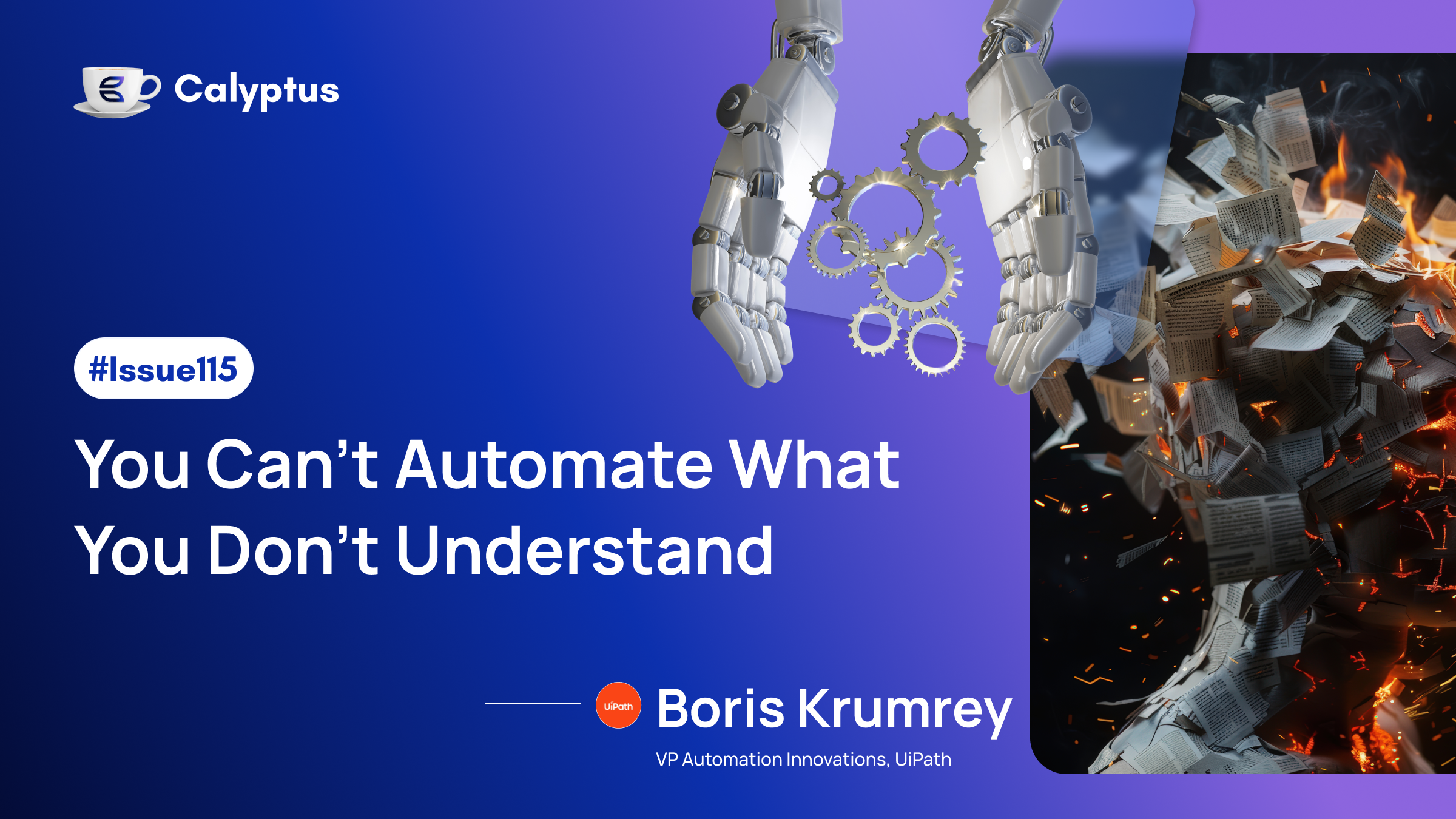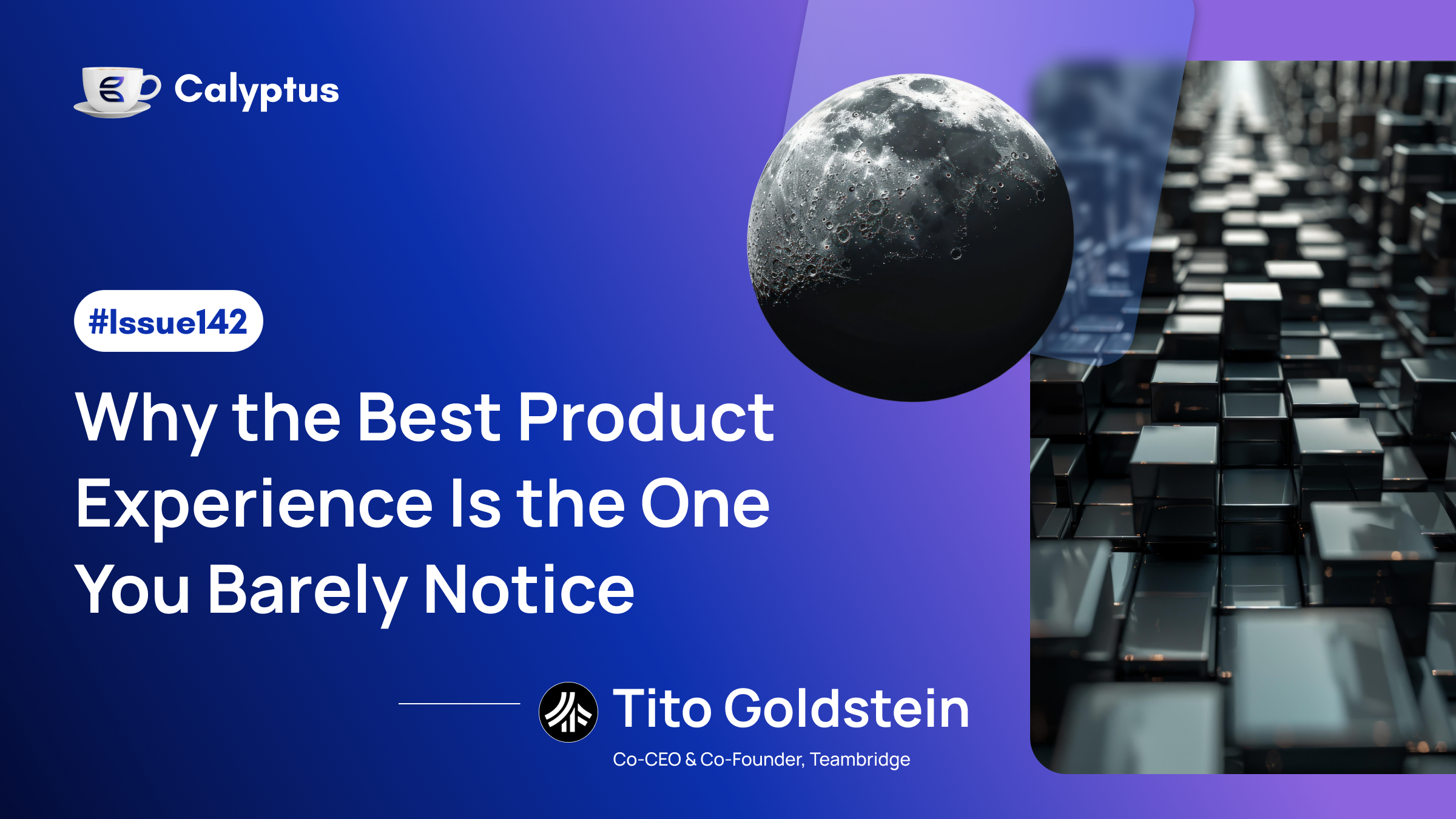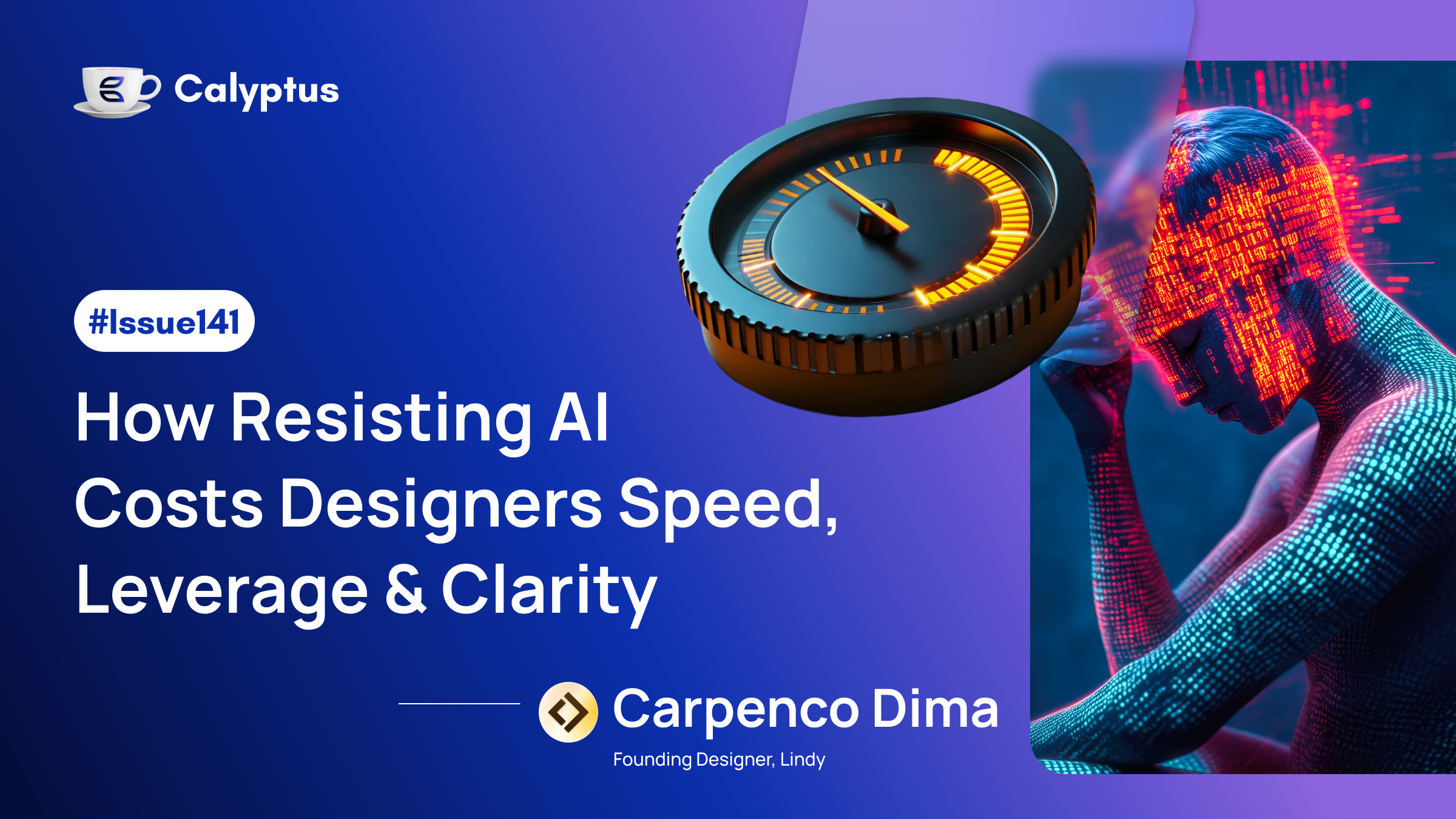In this edition of Coffee with Calyptus, we sit down with Boris Krumrey, Global VP of Automation Innovations at UiPath, to explore the evolving landscape of automation, from early RPA to today’s Agentic AI. With deep roots in service transition and transformation, Boris unpacks the shift from labor arbitrage to intelligent automation, and the harsh realities of AI adoption.

What was the major personal or professional shift that drew you towards working in automation at UiPath and previously Atos?
Before joining UiPath, I discovered RPA at Atos, where I explored various vendors. The concept of creating software robots to mimic human work resonated with me, especially given my background in Outsourcing service transition and solution practice. I immediately saw RPA's potential as a foundation for "digital twins," moving beyond labor arbitrage to a new level of process automation. Agentic Automation is the natural evolution of RPA towards this vision. During my time at Atos, one of UiPath's largest customers, I collaborated closely with Daniel Dines, who eventually invited me to lead the product development team.
What inspired your creation of the UiPath Immersion Labs aka “The Automation Kitchen”, and how is this changing the way customers think about automation and innovation?
Many people had a limited understanding of RPA and its capabilities, so we created a space for customers to experience RPA in action and see its use cases firsthand. This highly effective approach changed customers' preconceived notions of RPA, leaving them with new ideas, strategies, and concepts for leveraging the technology.
Looking back to your work with Robotic Process Automation (RPA) at Atos, how has your view of automation matured or changed as AI has entered the picture?
RPA and AI share many similarities in their origins and current applications. Both technologies have faced challenges in establishing their value and gaining business unit adoption to improve efficiency. Additionally, the impact of AI, often misunderstood in its practical applications, is similar to that of RPA.
However, the key difference lies in the complexity and rapid pace of Generative AI’s evolution. GenAI solutions encompass various factors, such as the chosen LLM model, prompt, computation platform and cost, context like RAG, memory and MCP extensions, guardrails or controlled agency and auditability, human-in-the-loop and test evaluation to ensure accuracy, and large-scale deployment challenges. This complexity, coupled with the race towards AGI models, has led to an overwhelming increase in the number of code-vibed customer applications generated by AI companies and the IT world.
A solution like UiPath, which offers an orchestrated and controlled agency platform for AI, could significantly differentiate between successful and unsuccessful AI projects.
When you're working with enterprises trying to reinvent processes with automation, where do you see the biggest disconnect between ambition and execution?
Despite considerable financial outlay, AI currently presents a significant investment-value paradox, with the majority of organizations failing to achieve tangible enterprise-wide results. Reports from Accenture indicate that only 13% of organizations realize substantial enterprise impact (Accenture, "Human by Design: The Tech Vision 2025"), while BCG highlights an "AI impact gap." Although the power of AI tools like ChatGPT, Gemini, and Claude is evident in daily life, a significant trust gap emerges when attempting to scale and automate processes using autonomous agents to dynamically solve operational challenges. UiPath's platform offers a structured approach to gradually adopting this advanced level of AI. However, a major hurdle remains: despite widespread discussion about AI, many, particularly within IT departments, lack a comprehensive understanding of its implications and their potential to influence its development and shape their own future.
How are you seeing companies successfully adopt AI in their operations today, and what patterns are emerging in terms of what works and what doesn’t?
Unlike deterministic, rule-based systems, applying AI is inherently dynamic and more complex. Agentic AI solutions reason and plan based on the given context, meaning results can vary between runs. Companies are eager to use agents for rapid problem-solving but often transform them into GenAI workflows to optimize computational costs. This involves progressively reducing the dynamic aspects of the AI solution.
Agentic solutions will only remain prevalent when dynamism, agility, speed-to-delivery, and autonomy are prioritized, or when AI computational costs significantly decrease.
We hope you enjoyed this edition of Coffee with Calyptus. Stay curious, stay inspired, and keep building what matters. Explore more editions and insightful articles at https://www.calyptus.co/blog.




